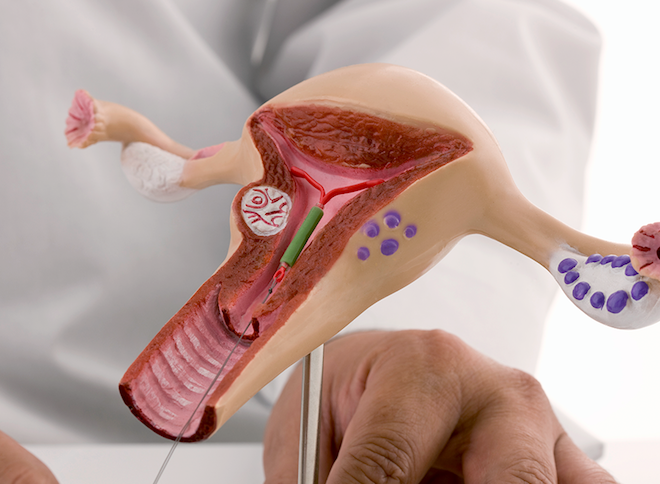
Intra-Uterine Insemination
This procedure aims increasing the chance of uniting sperm with ovum. Although one ovum spontaneously maturates each month, time of maturation is manipulated with medications that are administered to the woman, and thus, the sperm meets the ovum at the most appropriate time.
Hatching time is also manipulated with hatching medicament. The sperms of the male subject are washed and prepared with specific methods at laboratory settings. Sperms with forward motility are collected, and sperms with no chance of fertilization are discarded. Sperms chosen for the pregnancy are injected into uterine cavity with a special catheter in order to place them at a higher localization relative to the site of normal ejaculation, and thus, sperms can reach the ovum in the Fallopian tube in a shorter time. Thus, the distance sperms should cover is shortened and more motile sperms are helped to reach ovum or ova.
What are indications of insemination?
The insemination method, which is relatively a more affordable, easy-to-use and practical technique, is the most preferred treatment in many conditions.
This method requires patency of at least one Fallopian tube. Therefore, uterine cavity should be necessarily imaged in order to verify that the tubes are patent and functioning, before insemination is carried out. Laparoscopy surgeries, which are performed for diagnosis or surgical management of other conditions, such as cystectomy, show whether the Fallopian tubes are patent or not.
Insemination helps conditions written below;
* Idiopathic Infertility
* Low sperm count or motility (Male factor)
* Men with ejaculatory problems
* Anovulation or insufficient ovulation (ovulatory factor)
* Cervical problems
* Sexual dysfunctions - inability to have sexual intercourse
* Presence of antibody against sperm (Immunologic infertility)
What is the conception rate in insemination?
Chance of conception is around 10-15% for each attempt of the insemination. Patient should be duly informed that these rates represent the upper limit in order to prevent disappointment if the conception fails.
What is number of maximum attempts in insemination?
The recent consensus is that insemination can be done maximum 3 times. Number of embryo transfers is determined according to the etiology of inability to conceive and expectations of the couple.
It can be considered that insemination will not help some couples depending on the underlying cause of the inability to conceive. Pregnancy may not be achieved even if insemination is done 3 times and all the stages of the therapy progress smoothly and as expected. If so, couples should be referred to the IVF therapy.
Is the Sperm Quality Important for Insemination?
It is not true to expect too much benefit from insemination, if sperm count is too low and motility is poor. Although there is no consensus on number and motility, the widely accepted view is that number of sperms with forward motility should be >1 million/ml, after sperms of the male subject are washed. Presence of sperm deformity is another issue that should be carefully taken into account. In pre-insemination spermiogram, the number of sperms with normal morphology should be minimum >4 percent.
The In Vitro Fertilization implies fertilizing a human oocyte with a human sperm at the laboratory settings and transferring the resultant embryo into the womb.
The robotic rehabilitation is a treatment modality used to restore the walking ability in patients with total or partial loss of the gait function. The robotic rehabilitation is an evidence-based treatment that also involves virtual reality processes.
All pre-and post-operative procedures of the kidney transplant are extremely crucial for the health of both the recipient and the donor.
The check-up examinations allows treatment of the diseases successfully before the condition progresses to the symptomatic stage, as it ensures early diagnosis of many diseases.
An aesthetic look is important for most women. Certain processes that can cause deformities in women's body can make them feel unhappy and desperate.
Breast cancer is the most common type of cancer in women not only in our country but also worldwide.
As coronavirus (COVID-19) pandemic progresses, scientists teach us more about the virus and how it progresses.